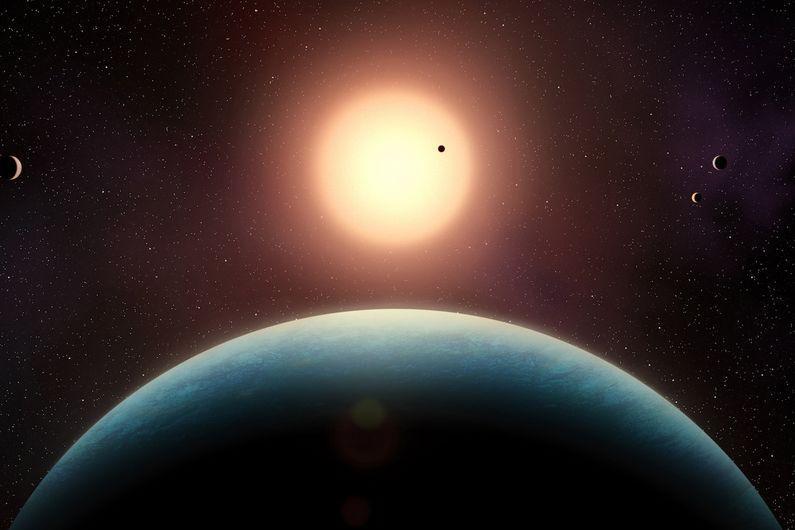
New Super-Earth Discovered: A Step Closer to Finding Life Beyond Earth
In a groundbreaking discovery, a team of scientists from the Trottier Institute for Research on Exoplanets (IREx) at the Université de Montréal has confirmed the existence of a super-Earth in the L 98-59 planetary system, located a mere 35 light-years away. The planet, named L 98-59 f, is a significant find in the search for life beyond Earth, as it receives a similar amount of stellar energy as our own planet, placing it within the temperate, potentially habitable zone.
The L 98-59 system is a red dwarf star, a type of small, cool star that is much less massive than the Sun. Despite its small size, the star is still capable of supporting a planetary system, and the discovery of L 98-59 f is a testament to the diversity of exoplanetary systems that exist in our galaxy.
The team used a combination of observations from the NASA Transiting Exoplanet Survey Satellite (TESS) and the European Space Agency’s (ESA) Gaia spacecraft to confirm the existence of the new planet. TESS is designed to monitor the brightness of stars and detect the tiny dips in light that occur when a planet passes in front of its star, a technique known as the transit method. Gaia, on the other hand, provides precise measurements of the positions, distances, and motions of stars in the galaxy.
By analyzing the data from these observations, the team was able to determine the mass and orbital characteristics of L 98-59 f. The planet is estimated to be between 1.5 and 2.5 times more massive than Earth, making it a super-Earth. It orbits its star every 9.4 days, which means it receives a similar amount of stellar energy as Earth, placing it within the temperate zone where liquid water could exist on its surface.
Liquid water is a crucial ingredient for life as we know it, and the discovery of L 98-59 f provides a tantalizing prospect for the possibility of life existing on this distant world. The surface temperature of the planet is estimated to be between -12°C and 10°C, which is similar to the temperatures found on Earth. This suggests that the planet may have a stable climate, which could support the emergence of life.
The discovery of L 98-59 f is not only a significant find for the field of exoplanetary science but also provides new opportunities for further research. Future studies could focus on characterizing the planet’s atmosphere and searching for signs of biological activity. The discovery also highlights the importance of continued investment in exoplanet hunting and the development of new technologies to study distant worlds.
The L 98-59 system is a reminder that there are still many mysteries waiting to be uncovered in our galaxy. The discovery of new exoplanets, like L 98-59 f, provides a glimpse into the diversity of planetary systems that exist and the potential for life to thrive beyond Earth.
In conclusion, the discovery of L 98-59 f is a significant milestone in the search for life beyond our planet. The fact that this super-Earth receives a similar amount of stellar energy as Earth and is located within the temperate zone makes it a prime target for further study and potential habitability. As scientists, we are one step closer to answering the age-old question of whether we are alone in the universe.
Source:






